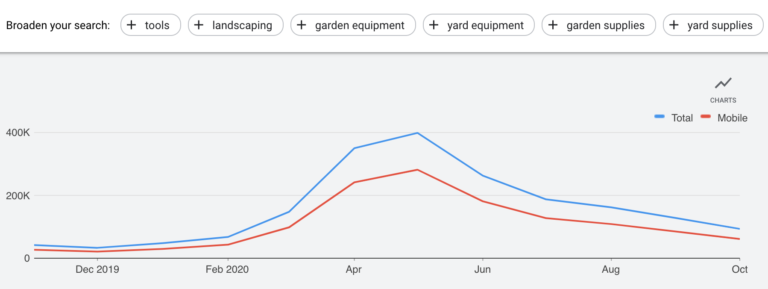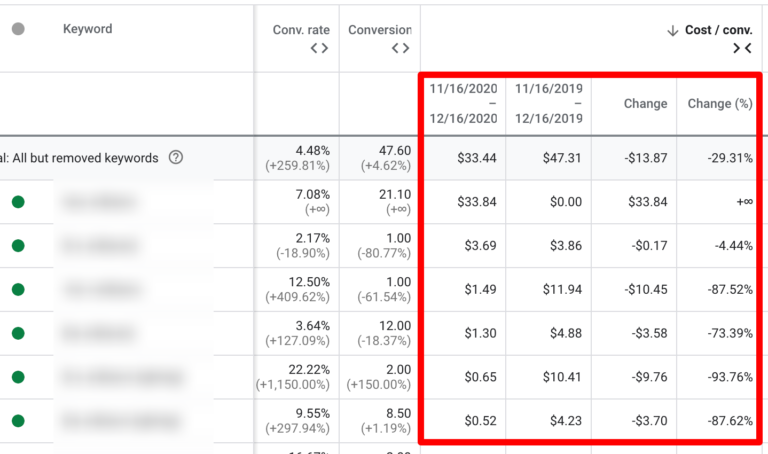As much as it didn’t seem possible, we’ve made it to the end of 2020. It’s been quite a “different” year for many of us as search marketers.
Interesting challenges presented themselves with shrunken budgets for many, or even altered tactics to see success during this year’s darkest days.
For a fortunate few, business actually grew digitally in certain industry verticals through the year that afforded them the ability to test new ideas. If anything, this year has forced us to think differently.
This provides a great chance to look at your digital campaigns; and in avoidance of complacency, audit your year to see the success that may help you in 2021.
Let’s take a look into five areas that glean future insight!
Traffic
Take to analytics for a year-over-year view of site traffic.
What happened in the last year, comparatively speaking, that you should take note of?
- Did usual website traffic seasonality change due to the pandemic that you may need to consider (as we will likely spend another half year in this climate)?
- Have you seen specific channels, whether in search or not, that have seen a positive or negative transient in user behavior and engagement with site touchpoints?

- Overall, have specific landing pages or exit pages made drastic changes over the last year that may be a call for revision or enhancement?
Technical
A year-end technical site audit is always a best practice.
Often, much is added to your website over the course of a year, and little is removed.

From within your Google Analytics account, do a year-over-year review (month of December) comparison of page load speed.
You may see some obvious offenders that you need to review specifically for – invalid file references, large file-size image additions, etc. that should be revised.
- Review the development deployment calendar. How many tags have manually placed on the site? Are these still in use? Can we clean things up a bit and deploy through a tag manager?
Keywords
From both an organic and paid search standpoint take look at keyword volume trends over time.

- Those terms that have been targeted over the year, do they still feature an expected search volume, are they waning, or maybe the keyword family is growing and should be given attention in your 2021 content strategy?
- Are there month-to-month variances in your keywords that could indicate additional paid search focus during future months next year?

Take a year-over-year review of your paid keywords’ cost-per-click as well as cost-per-conversion.
You may have your conversion blinders on see continual keyword success but diminishing ROI as your competition is building for a given term.
You may want to spend more granularly around this term to find the same type of searcher but at a cheaper price.
Or, on a positive note, you may find keyword terms with improving cost per conversion!
Content
Which content resonated the most?
Remember, it isn’t always about the content that brought first-visit sales or leads to your organization.
A lot of your content feeds brand awareness and informational seeking needs in hopefully driving engagement and conversion down the road.
- Which pieces deployed in your 2020 content marketing strategy showed the highest pages per visit and session duration on your website? Marketers can sometimes be distracted by what is thought as high success due to click-through rate. At the potential cost of a high bounce rate, you should look for those assets that helped open a door for someone to explore your brand.
- What content lifted key performance indicators on your site? As I mentioned, don’t expect your content to bring sales in immediately. Instead, look at those indicators of soft engagement.
- What content leads to a newsletter sign-up, a PDF download, or subscribing to your blog? These touchpoints show that specific content builds enough visitor trust to be open to future content.

Perform a review of the analytical insights provided by social media outlets such as Facebook Insights or LinkedIn Analytics.
While many may resort to advertising in these verticals and seem dumbfounded when visits are not turning into sales, you have to think about the role of the platform. Instead, review your organic posts of the last year.
- What content saw the greatest engagement?
- What was shared the most and saw the most comments or reactions?
This helps build an audience of followers.
While these are not direct sale routes, you are building an avenue for people to enter your site, walk around, possibly sign up for a newsletter, eventually convert one day.
The point here is that you need to find the content types from the past that resonate and will lead to future user journeys.
Links
Simply put, what types of inbound links are you losing and what type of inbound links are you gaining?
This has been a difficult year for those who’ve relied on link attainment through usual modes. These include participation in events such as conference events and panels, as well as participation and sponsorship in live events.
Much of this washed away in the Spring of 2020 but has improved somewhat with virtual communication over the course of the year.
Hopefully, you have access to one of the many robust link profile review providers available today.
- Review your competitive gap. It doesn’t hurt to get your tips from others in your industry as they can shed light on what works right now and likely in the near future from an inbound link perspective.

- Perform a review of links gained over the course of the year. Are there months that stood out? What types of links were these? Typically, this practice is performed from a lost link technical angle to assess issues with your site or the referring location that may be breaking the link.
Look for the positive here.
We know that “easy” links are hard to come by moving into the continued pandemic climate so let’s assess where we won and the types of content that brought us success.
Looking Ahead
There is no doubt that many of us have stretched our minds over the last 12 months. Don’t take this work for granted.
It made us smarter.
Performing a review as we have walked through can hopefully make your January a little more peaceful as your strategic ideation will be aided by what you have found.
More Resources:
- How to Measure Success in PPC Campaigns With & Without Conversion Data
- 10 Important PPC Trends to Watch in 2021
- How to Use Paid Search Insights to Optimize Other Marketing Channels
Image Credits
Featured image by the author
All screenshots taken by author, December 2020





![AI Overviews: We Reverse-Engineered Them So You Don't Have To [+ What You Need To Do Next]](https://www.searchenginejournal.com/wp-content/uploads/2025/04/sidebar1x-455.png)